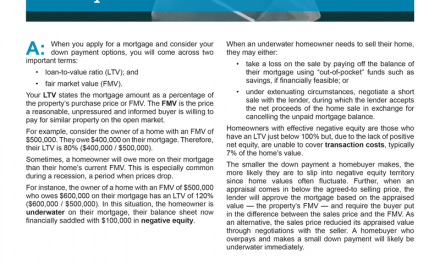Mortgage Concepts is a recurring video series covering best practices and compliance education for California mortgage loan originators (MLOs). This video is the second of a 2-part series explaining the history of the adjustable rate mortgage (ARM). For Part 1, see Mortgage concepts: The birth of the adjustable rate mortgage (ARM).
For course credit toward renewing your NMLS license, visit firsttuesday.us.
Modern-day ARM twisting
The face of the ARM has changed over the years, most markedly during the Millennium Boom of the mid-2000s.
20 years after ARMs became fixtures in the U.S. mortgage landscape, the housing market was experiencing an unprecedented boom. Fueled by low interest rates and speculative fever, home prices were skyrocketing. Mortgage lending standards were lax, in part due to demand from bond market investors for ever more securitized mortgages, and in part due to the hubristic belief that prices always rise, and therefore the collateral (the property), rather than the homebuyer, will satisfy the mortgage.
When demand for mortgages peaked in mid-2005, Wall Street had perfected its vertically expanded system by acquiring ownership of all companies in the chain for gathering, bundling and reselling mortgages. The bundled mortgages were acquired by millions of investors worldwide through the mortgage-backed bond (MBB) market.
Of course, the pace for issuance of these bonds was such that it was dependent on ever growing numbers of new mortgages originations. The most infamous of these new mortgage products were subprime mortgages. But the multitude of creative new types of ARMs were also developed — or rather, revived — during this era. When the homebuyer could not afford a mortgage, it was the mortgage lender’s fault, not the homebuyer’s.
In the history of ARMs, we discussed that FRMs guarantee a set rate of interest over a long period of time. Lenders necessarily build into the FRM interest rate the cost of keeping an interest rate “locked-in” at that interest rate for 30 years. Conversely, ARMs typically have lower initial rates because the initial “fixed rate” period is shorter — a matter of a few months to a few years, rather than 30 years.
Accordingly, generally unqualified homebuyers were able to qualify for a mortgage to fund their purchase price. ARMs offered low initial interest rates to qualify and very low payment schedule options for up to ten years.
Negative amortization mortgages were introduced, deliberately setting payments at less than the amount of interest accruing monthly, enabling low-income families to qualify for a mortgage. Of course, the accrued and unpaid interest did not just accumulate, it was added to the principal so it earned interest. Progressive regression; it all exploded in the 2008 recession.
ARMs today
Most recently, ARM use dipped during the pandemic era of historically low interest rates. However, interest rates resumed their upward rise in 2022, and homebuyers again turned to ARMs.
However, by late 2022, ARM interest rates had quickly exceeded FRM rates as the Fed drove ARM rates up to fight consumer inflation while the bond market allowed FRM rates to drift lower as other investment opportunities diminished. Thus, an inversion of rates occurred, which instantly removed the appeal of ARMs for homebuyers seeking to extend their purchasing power.
Looking ahead, the many homebuyers who took out ARMs in 2022 will be at the mercy of rising interest rates during the coming decades into the 2040s, likely without offsetting increases in wages. A classic parallel with the rising interest paid by S&Ls on their borrowings (deposits, of course) going into the 1980s.
Related article:


















